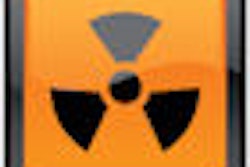Wednesday, December 2 | 3:10 p.m.-3:20 p.m. | SSM19-02 | Room N230
Judging from the results of a phantom study using dual-energy CT (DECT), infants will soon be able to squirm and fuss all they want without blurring the images. Lead author Cynthia McCollough, Ph.D., told AuntMinnie.com there's a lot of excitement around the use of high-pitch scanning in children to facilitate the whole process."We used [electron-beam CT] for kids for many years here and knew well the incredible benefit of not having to sedate the kids while not having to accept motion artifact," she said. "This mode is even faster, and the image quality of MDCT systems is much better."
The researchers created a phantom by filling the internal cavity of an infant-sized doll with wax and several high-contrast structures to evaluate image artifacts and spatial resolution. During scanning (Somatom Definition Flash, Siemens Healthcare, Malvern, PA) using typical pediatric CT scan protocols the doll was rocked from its back to its side once every other second.
Two CT scan protocols were compared, one in single-source mode with a pitch of 0.9, and another in dual-source mode with a higher pitch of 3.2 and 75 msec temporal resolution per image. Rotation time (0.28 seconds) and radiation dose for both scans was identical.
Compared to the severe misalignments seen with the standard-pitch protocol, the 75-msec temporal resolution, 3.2-pitch DECT scheme yielded high-quality, artifact-free images of the rapidly moving phantom. As a bonus, the high-temporal resolution body CT scan mode also minimized the need for breath-holding.




















